

DEPARTMENT Santa Barbara County Probation Department OVERVIEW SANTA BARBARA ADMINISTRATION 117 E. CARRILLO ST. SANTA BARBARA, CA 93101 (805) 882-3700 SANTA MARIA ADMINISTRATION 2121 CENTERPOINTE PKWY. SANTA MARIA, CA 93455 (805) 803-8500 www.sbprobation.org

TABLE OF CONTENTS 01 What is Probation? 02 Who We Are & What We Value 06 About Us 08 Our Locations 09 Santa Barbara County Leaders 10 Adult Services Division 20 Juvenile Facilities 24 Juvenile Services Division
WHATISPROBATION?
Established in 1909, the Santa Barbara County Probation Department serves the Courts, assists adults and youth, and provides services to victims. The Probation Department provides a variety of services to our community which include making recommendations to the court, enforcing court orders, assisting victims and their families, and providing supportive services to those individuals under supervision. Deputy Probation Officers (DPOs) and Juvenile Institutions Officers (JIOs) are peace officers who have the authority to arrest clients and youth under supervision. This could occur if new law violations are committed, including violations of orders of the Court, or there is a failure to follow the conditions of probation or Post Release Community Supervision (PRCS).
The Probation Department utilizes a variety of community resources to provide physical, emotional, behavioral and social services for both adult and juvenile clients under supervision In addition to referring individuals to local Community-Based Organizations (CBO’s), the Probation Department operates a Probation Report and Resource Center (PRRC) in both Santa Barbara and Santa Maria which serve adult clients throughout Santa Barbara County These resource centers offer a welcoming environment for clients to attend evidencebased therapeutic sessions, life skills training, cognitive behavioral interventions, employment development, housing referrals, case management, and substance abuse interventions.
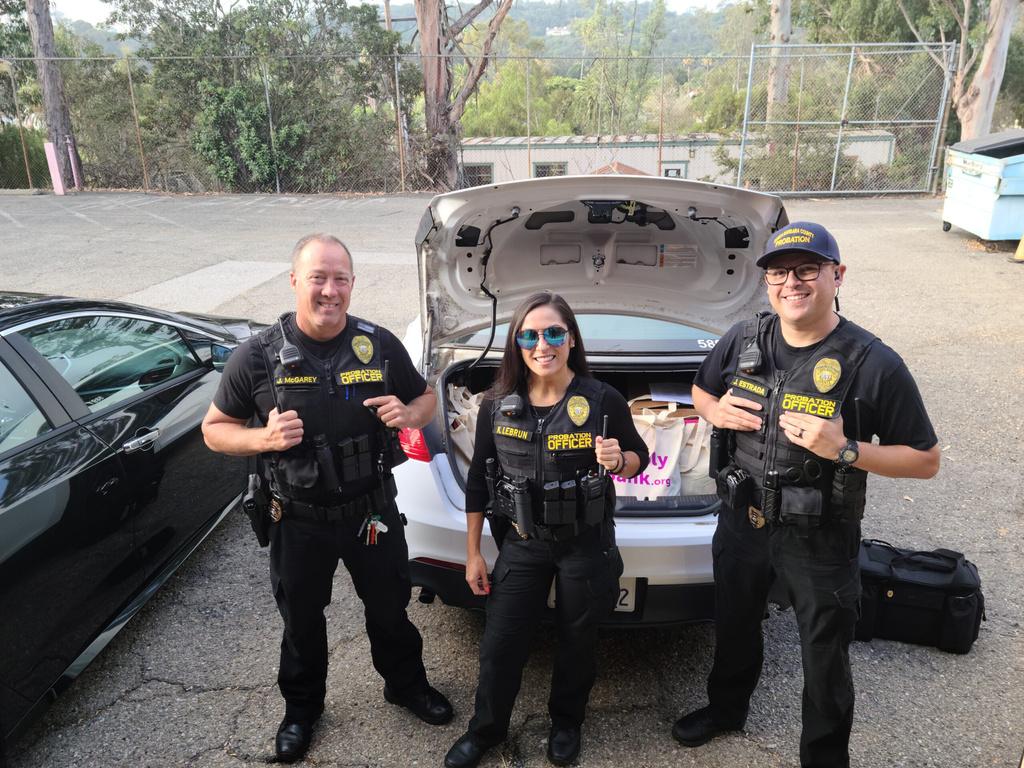
SANTA BARBARA COUNTY PROBATION DEPARTMENT OVERVIEW 2023
P. 01
WHOWEARE& WHATWEVALUE OUR MISSION
To protect and serve the community by:
Providing information and recommendations to the Courts; Providing safe, secure, and effective juvenile detention and treatment programs; Enforcing court orders and supervision and release conditions requiring responsibility/accountability, and supporting rehabilitation; and Supporting victims of crime by facilitating reparation and restitution collection.
OUR VISION
To promote justice and safety in the community through:
Delivering corrections services that are evidence-based, community oriented, strength based, and family focused;
Guiding, motivating and directing those under supervision to take personal responsibility for their actions and facilitating case plans that support their success in the community;
Maintaining collaborative partnerships with the Courts, law enforcement, schools, and community service agencies;

Supporting victims by serving as an informational resource, establishing and collecting restitution, and providing balanced and restorative justice interventions for the community; and;
Encouraging active and informed community responses to crime.
P 02 SANTA BARBARA COUNTY PROBATION DEPARTMENT OVERVIEW 2023
ORGANIZATIONALVALUES
Our employees are our greatest assets. The effectiveness of the Department is directly related to the extent to which all employees adhere to the following values: honesty, integrity, dedication, loyalty, teamwork, and ethical work performance. These values are the foundation upon which we perform our duties and interact with one another, the Courts, those under supervision, realigned clients, partner agencies, and the general public. The following Organizational Values and Code of Ethics guide our efforts to serve and protect the citizens of Santa Barbara County:
POSITIVE WORK ENVIRONMENT
We value and promote a positive work environment that:
Protects the safety and welfare of employees, probationers, realigned clients, youth and the general public;
Encourages initiative, productivity, creativity, teamwork and professional growth; and
Stresses tolerance and is free of racial, ethnic, religious, and sexual harassment.
We value and promote the competency of all staff by:
Providing training to enable employees to effectively carry out their complex duties and individual responsibilities; Encouraging a variety of work experiences to enhance versatility, employee motivation, advancement, and opportunities for future professional growth; Providing employees with timely, balanced and objective assessments of their work performance; and
Recognizing excellent work performance.
P 03 SANTA BARBARA COUNTY PROBATION DEPARTMENT OVERVIEW 2023
INNOVATION & FLEXIBILITY PUBLIC
COMPETENCY POSITIVE WORK ENVIRONMENT COMPETENCY LEADERSHIP
RESOURCES
LEADERSHIP
We value and promote the development and demonstration of leadership by:
Recognizing that leaders exist at all levels of the organization and encouraging the development and exercise of leadership skills;
Acknowledging that that leadership is displayed through technical acumen, initiative, vision, decisiveness, and accountability extending beyond the immediate scope of responsibility;
Recognizing that leaders look for the bigger picture, influence beyond the boundaries of their immediate assignment, and think and act in terms of positive change; and
Acknowledging that good leadership is objective, compassionate, understanding, and respectful of the dignity of others.
INNOVATION AND FLEXIBILITY
We value and promote innovation and flexibility within the organization by:
Seeking more effective, innovative, and evidence-based ways to deliver probation services within an ever changing environment; Soliciting and considering feedback from consumers and staff, identifying and evaluating alternatives, and communicating outcomes and rationale prior to making formal organizational changes; and Planning and preparing for the implementation of organizational change in order to optimize results and cost effectiveness.
PUBLIC RESOURCES
We value and promote the effective use of all public resources by:
Being accountable for providing all services in an efficient, cost-effective, and customer-focused manner within budgetary constraints; Utilizing current technology in order to provide the most effective service delivery; Implementing a robust program for the training and use of volunteers and student interns to reduce operational costs and enhance productivity; Encouraging volunteerism and community involvement by employees; and Collaborating with other government and community based organizations.
P 04 SANTA BARBARA COUNTY PROBATION DEPARTMENT OVERVIEW 2023
CODE OF ETHICS
In recognition of the profound responsibilities inherent in a profession dedicated to the adjustment of social relationships, Santa Barbara County Probation Department employees acknowledge these to be our guiding principles:
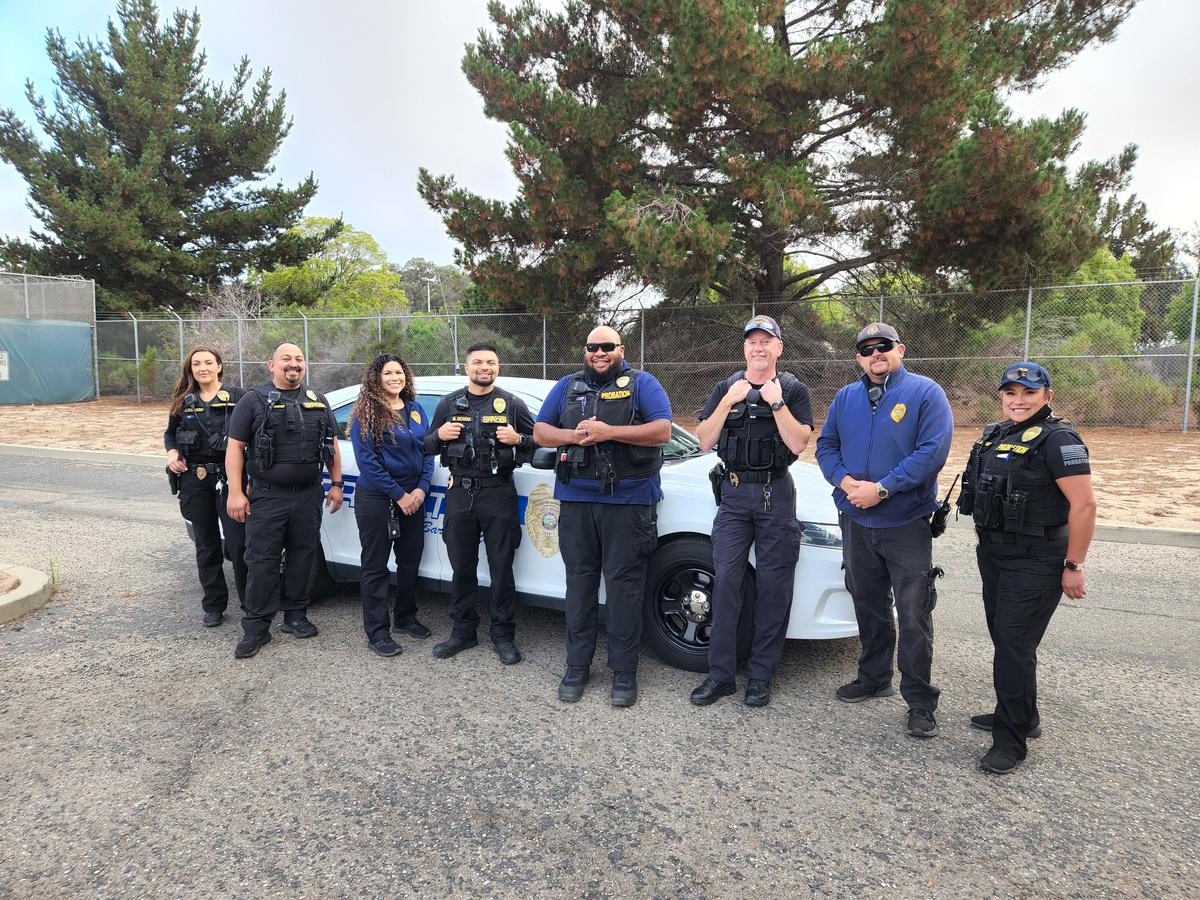
SERVE WITH HUMILITY ACT WITHOUT PREJUDICE
UPHOLD THE LAW WITH DIGNITY
BE OBJECTIVE IN THE PERFORMANCE OF MY DUTIES
RESPECT THE INALIENABLE RIGHTS OF ALL PERSONS MAINTAIN CONFIDENCES ENTRUSTED TO ME
COOPERATE WITH FELLOW WORKERS AND RELATED AGENCIES
BE AWARE OF MY RESPONSIBILITIES TO THE INDIVIDUAL AND TO THE COMMUNITY IMPROVE MY PROFESSIONAL STANDARDS THROUGH CONTINUOUSLY SEEKING KNOWLEDGE AND UNDERSTANDING CONDUCT MY PERSONAL LIFE WITH DECORUM
We accept these principles as our Code of Ethics and shall build our professional lives upon them.
P 05
ABOUTUS
The Probation Department operates four (4) field service offices, two (2) Adult Probation Report and Resource Centers (PRRCs), one (1) Juvenile Justice Center, and one (1) Boys Camp. The Administrative Office is located at 117 East Carrillo Street, Santa Barbara CA 93101.

The Department’s Fiscal Year (FY) 2022-2023 operating budget funds 315.5 positions. The FY 2022-2023 adopted operating budget is $65,485,800 Sixty-seven percent (67%) of the Department’s personnel are deputized and have peace officer powers. The Chief Probation Officer has the overall responsibility for the Department and is appointed by the judge of the Juvenile Court, per Section (§)270 of the Welfare and Institutions Code. There are three (3) sworn Deputy Chief Probation Officers; each is responsible for operations of a specific divisional and/or team area: Adult Services; Juvenile Services, and Research and External Affairs; and Juvenile Facilities Fiscal, Revenue Recovery Unit, the Professional Standards Unit, Information Technology and support services are under the oversight of the Administrative Deputy Director.

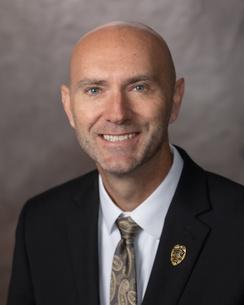

 Holly Benton Chief Probation Officer
Spencer Cross Acting Deputy Chief Adult Division
Samuel Leach Deputy Chief Juvenile Facilities Division
Melinda Barrera Deputy Chief Juvenile Division
Holly Benton Chief Probation Officer
Spencer Cross Acting Deputy Chief Adult Division
Samuel Leach Deputy Chief Juvenile Facilities Division
Melinda Barrera Deputy Chief Juvenile Division
SANTA BARBARA COUNTY PROBATION DEPARTMENT OVERVIEW 2023
Damon Fletcher Administrative Deputy Director, Fiscal, Support Services, and Revenue Recovery Unit, IT
P 06
PROBATION DEPARTMENT'S CURRENT WORKFORCE REPRESENTATION
Derived from the 2021 Equal Employment Opportunity Plan (EEOP), the Santa Barbara County Probation Department’s workforce data is represented in Fig. 1 and Fig. 2. The workforce data includes both sworn and non-sworn staff. Women make up 65% of the workforce, and men 35%. In terms of race and ethnicity, 4.5% of the Probation Department’s staff are Black; 52.1% are Hispanic; 38.3% are White; 1.2% American Indian/Alaskan Native; 3 6% Asian; and 0 3% Not Specified When compared to the Santa Barbara County workforce, the Probation Department has a higher rate of women, Black, and Hispanic personnel and a lower rate of men, Asian and White staff.
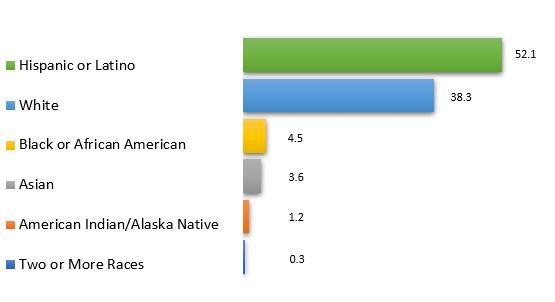

FEMALE MALE
P. 07 SANTA BARBARA COUNTY PROBATION DEPARTMENT OVERVIEW 2023
Figure 1: Probation Department Gender Distribution
Figure 2: Probation Department Race Distribution
OURLOCATIONS
LOMPOC
Adult & Juvenile Services
415 East Cypress Avenue
Lompoc, CA 93436
(805) 737-7800
SANTA BARBARA
Administration & Adult Services
117 East Carrillo Street
Santa Barbara, CA 93101
(805) 882-3700
Juvenile Services & Probation Report & Resource Center (PRRC)
4500 Hollister Avenue
Santa Barbara, CA 93101
Juvenile: (805) 692-4840
PRRC: (805) 692-4890
Los Prietos Boys Camp (LPBC)
3900 Paradise Road
Santa Barbara, CA 93105
(805) 692-1750
SANTA MARIA
Probation Report & Resource Center
124 Carmen Lane, Suite K
Santa Maria, CA 93458
(805) 346-7620
Administration & Adult Services
2121 Centerpointe Parkway
Santa Maria, CA 93455 (805) 803-8500
Juvenile Services
4251 California Boulevard
Santa Maria, CA 93455 (805) 934-6366
Susan J. Gionfriddo Juvenile Justice Center (JJC)

4263 California Boulevard
Santa Maria, CA 93455 (805) 934-6270
SANTA BARBARA COUNTY PROBATION DEPARTMENT OVERVIEW 2023
P 08
SANTABARBARACOUNTY LEADERS
BOARD OF SUPERVISORS
FIRST DISTRICT
SECOND DISTRICT
THIRD DISTRICT
FOURTH DISTRICT
FIFTH DISTRICT
Das Williams, Chair
Laura Capps
Joan Hartmann
Bob Nelson
Steve Lavagnino, Vice Chair
SUPERIOR COURT JUDICIAL OFFICERS
LOMPOC
Honorable Stephen Foley
Honorable Von Deroian
Honorable Jed Beebe
Honorable Stephen Foley
Honorable James Herman
Honorable Patricia Kelly
Honorable Thomas Adams
Honorable Thomas Anderle
Honorable Clifford Anderson
Honorable Michael Carrozo
Honorable Jean Dandona
Honorable Donna Geck
Honorable Brian Hill
Honorable Pauline MaxwellPresiding Judge
Honorable Raimundo Montes de Oca
Honorable Colleen Sterne
Honorable Kay Kuns
Honorable Gustavo Lavayen
Honorable John McGregor
Honorable James Rigali
Honorable Timothy Staffel
Honorable James Voysey
JUVENILE JUSTICE DELINQUENCY PREVENTION COMMISSTION
Gabriella Ferreira, Chair
Donna Tanney, Vice Chair
Barbara Kate Repa, Secretary/Treasurer
John Celichowski
John Forham
Lynn Houston
P 09 SANTA BARBARA COUNTY PROBATION DEPARTMENT OVERVIEW 2023
SANTA BARBARA
SANTA MARIA
ADULT SERVICES DIVISION

PRETRIAL ASSESSMENT
The Santa Barbara County Pretrial Assessment Unit uses a validated pretrial risk assessment tool, the Virginia Pretrial Risk Assessment Instrument Revised (VPRAI-R), to assess an individual's success on pretrial release From this information, the Pretrial Assessment Unit prepares reports to the Court to help inform release decisions based on the individual's risk of a new arrest or failure to appear pending trial.
PRETRIAL SUPERVISION
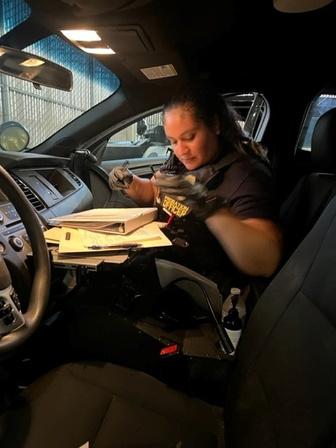
The Santa Barbara County Pretrial justice system is committed to effectively supervising those released on pretrial supervision, reasonably assuring attendance at court hearings while maintaining the presumption oviding protection to obation Officers (DPOs) ompliance Officers individuals and their ons of supervised he PTCOs communicate morandum reports to d attorneys.


CES provides direct criminal ion to the Superior tten by DPOs.
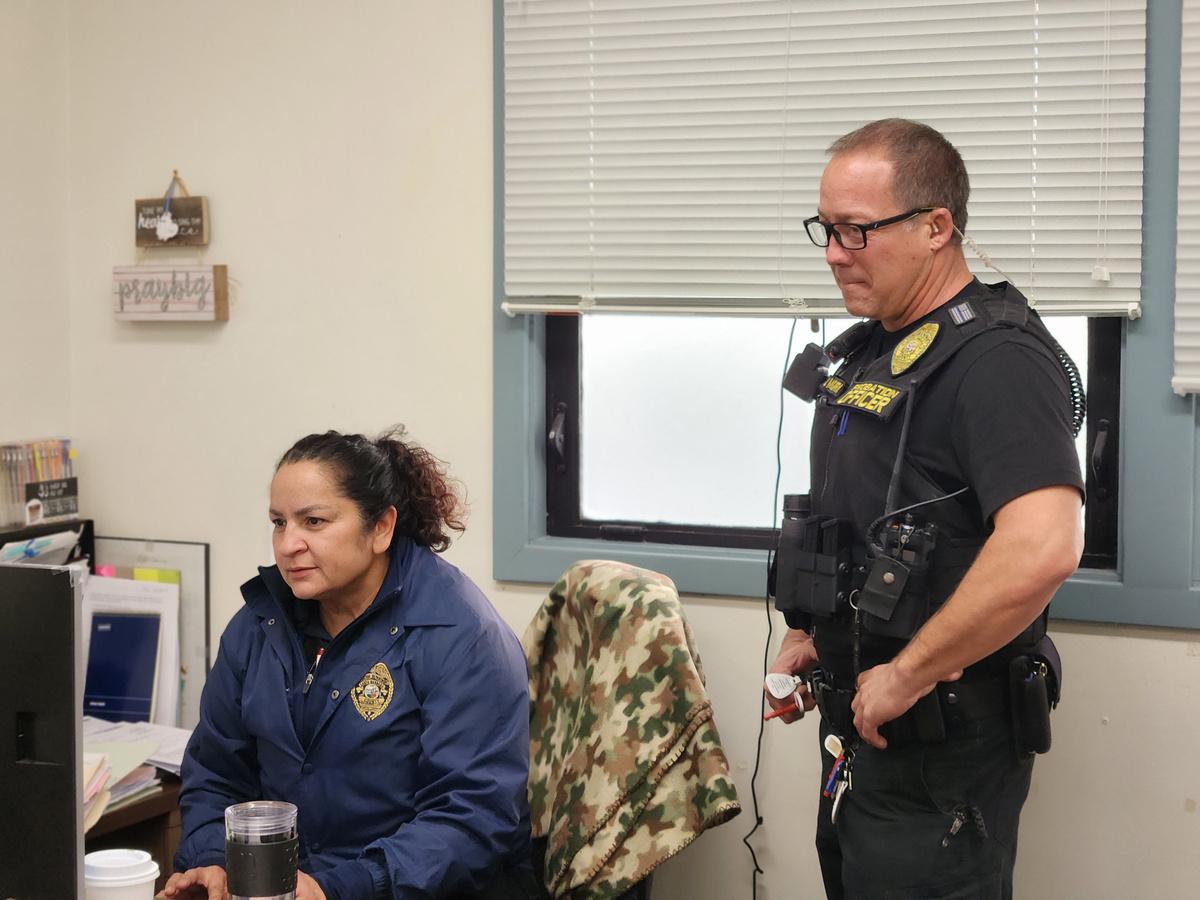
SANTA BARBARA COUNTY PROBATION DEPARTMENT OVERVIEW 2023 P 10
Reports are provided in the cases of individuals awaiting a judgment of guilt or innocence (Pre-Plea reports), or who have been found guilty and are awaiting the Court's disposition of their case (Pre-Sentence reports). These reports include factual summaries of the offense, a social and criminal history of the client, and a summary of the individual including, their statement, the statement of the victim or other interested parties, restitution information and an evaluation of the offense and the client
Both Pre-Plea and Pre-Sentence reports include a review of the defendant’s eligibility for probation (the law prohibits probation in some cases) and a recommendation as to whether or not probation should, in the Department’s opinion, be granted. If probation supervision is recommended, appropriate terms and conditions are also suggested. For cases that are no longer statutorily eligible for state prison due to Public Safety Realignment, the Court will determine whether the client will serve the entire sentence in local custody with no supervision ordered, or impose a split sentence. Split sentences require the individual to serve a portion of their sentence in custody within the county jail and the remaining portion of the sentence in the community under supervision of the Probation Department. If they have been sentenced to prison and a report has not previously been ordered, a Post-Sentence report is prepared to provide prison officials with the offense summary and criminal/social history of the individual they are receiving.
SUPERVISION OF ADULTS ON PROBATION
The Probation Department utilizes supervision services in conjunction with specialized programs such as Substance Abuse Treatment Court (SATC), Mental Health Treatment Court (MHTC), Veterans Treatment Court (VTC), Domestic Violence (DV) Caseloads, and Sex Offender Supervision, to supervise adult clients Additionally, under the 2011 Public Safety Realignment Act, specialized caseloads have been established to provide supervision of the Realigned felony population.
The level of supervision each client receives is based upon an evaluation of their risk to reoffend in the community and services needed as assessed by an evidence-based screening tool, the Adult Risk Initial Screening Tool (ARIST) If further assessment is indicated, the Correctional Offender Management for Profiling Alternative Sanctions (COMPAS) assessment is utilized. Case plans are developed to promote the achievement of milestones and support success. Those that present the highest risk to the community to reoffend receive the most intensive supervision. Adults released on probation in the community may have spent some time in jail as a condition of probation and may be required to participate in drug and alcohol programs, cognitive
P 11 SANTA BARBARA COUNTY PROBATION DEPARTMENT OVERVIEW 2023
behavior therapy, counseling, vocational training and/or job placement programs. Referrals to evidence-based programming are submitted by the DPO and attendance is monitored. Those under probation supervision may be contacted at home, on the job, or in the community and may be required to submit to drug testing and to permit search of their personal property for contraband. In instances where Court orders restitution, Probation monitors payments to victims.
An "evidence-based" program offers a high-level of research on effectiveness deteremined as a result of rigorous evaluations.
The County's Realignment Plan is available on the Probation Department website at www.sbprobation.org under "CCP".
POST RELEASE COMMUNITY SUPERVISION AND POST-SENTENCE SUPERVISION
The 2011 Public Safety Realignment Act, implemented under Assembly Bill (AB) 109, brought two (2) additional populations under the jurisdiction of the county. The first is the Post Release Community Supervision (PRCS)
population of clients who have served a prison commitment for non-violent, non-serious felonies or non-high risk sex offenses. The second population are those convicted for non-violent, non-serious, non-sex felonies who serve their sentences locally, and can be subject to a mandatory split sentence of Post Sentence Supervision (PSS) by Probation as ordered by the Superior Court.
PRCS and PSS cases are supervised with an enhanced client to officer ratio A COMPAS risk and needs assessment and case plan are completed. Referrals to programs are initiated based on the criminogenic needs identified, including referral to the PRRC, GPS, or other specialty programming. During the first 90 days of supervision, in addition to office visits, field supervision contacts are conducted with an emphasis on non-business hours. Upon completion of the first 90-day re-entry period, the client’s supervision standards are reassessed based on their progress and the results of the risk/needs re-assessment. Case plans are regularly updated as clients complete programming associated with each goal. Positive progress is recognized through the use of incentives. Clients assessed as high risk to reoffend or to reoffend violently are supervised at the highest level. Medium-low risk clients may be transitioned to a lower level of supervision as determined by the nature of the offense, specialized legal or programming requirements, and their risk score
SANTA BARBARA COUNTY PROBATION DEPARTMENT OVERVIEW 2023
P 12
Global Positioning Satellite (GPS) or Secure Continuous Remote Alcohol Monitoring (SCRAM) may be utilized to monitor high-risk individuals.
ALTERNATIVE SENTENCING PROGRAM

In 2022, the Santa Barbara Probation Department began supervising all new clients placed on Electronic Monitoring (EM) within the County. Several months of discussion and planning with the Santa Barbara Sheriff’s Office (SBSO) determined that the Probation Department was better situated to offer quality community supervision services, assessment of the individual’s needs using evidence-based assessments, and referral to community-based programs In the past, clients assigned to EM were enrolled on GPS and monitored using computer software. The Probation Department now provides enhanced supervision while targeting individuals needs utilizing full time supervision officers. The assigned probation officers will provide program referrals, monitor GPS tracks, conduct office appointments and field visits, complete drug testing, and will provide other supervision services as appropriate. The Probation Department and the SBSO are committed to working together to provide the best possible service to establish positive outcomes for the individuals without sacrificing the safety of the community.
The Probation Department has improved the process to identify eligible alternative sentencing cases early in the criminal justice proceedings. When investigation officers from the Probation Department’s Investigation Units are preparing sentencing reports on persons who may serve time in a local jail, they will review the case for EM preeligibility. They will discuss the EM program with the individual and refer interested persons to the SBSO. They will also help individuals complete an application, if eligibility has been determined. The Investigating DPO will include the status of the EM application information in the sentencing report, if it is known. It is expected that the timely submission of applications prior to sentencing will help avoid unnecessary delays in the criminal justice proceedings. This may reduce or eliminate individuals having to return to Court to request extensions to remand dates following sentencing.
P 13 SANTA BARBARA COUNTY PROBATION DEPARTMENT OVERVIEW 2023
SPECIALITY COURT
Substance Abuse Treatment Court (SATC)
Since March 1996, the Santa Barbara County Probation Department, the Santa Barbara County Superior Court, and the offices of the District Attorney (DA) and Public Defender (PD) have served clients with substance abuse issues, and are referred to as SATC The target population for Post-Plea SATC is high-risk/high needs, misdemeanor or felony clients, and the goal is to reduce recidivism and substance abuse among non-violent clients by using evidence-based practices including: early, continuous, and judicially supervised treatments; mandatory periodic drug testing; and graduated rewards and interventions. This program relies upon countywide networking and cooperation of county agencies and Community-Based Organizations (CBOs) for support and success.
Once charges are filed against an individual and if the client is eligible and chooses to participate, they enter a highly structured treatment program lasting between 12-18 months. Upon successful completion of the program, charges are dismissed. Conversely, prosecution is reinstated if the client fails to attend the program or if urine testing repeatedly indicates the client is using drugs or alcohol.
In 2017, a Pre-Plea SATC track was implemented to serve low-risk/high needs clients. This program also utilizes evidenced-based practices and offers a less intensive drug court program that is effective and cost beneficial to medium-low risk misdemeanants or first-time felony clients with a limited criminal history

Post-Plea Dual Diagnosis Court (DDX)
The DDX Court was developed to address the specific needs of a population of highrisk misdemeanor and felony clients experiencing co-occurring disorders of mental illness and substance abuse. The DDX program follows the SATC model enhanced by supportive collaboration from the Probation Department, Behavioral Wellness (BeWell), and local CBOs. This specialty Court allows for a higher level of service, which includes more intensive interaction with clients in an effort to deter future criminal behavior and incarceration
SANTA BARBARA COUNTY PROBATION DEPARTMENT OVERVIEW 2023
P 14
Mental Health Treatment Court (MHTC)
The Post-Plea MHTC is a 12 to 18 month program, which can be inclusive of six (6) months or more of aftercare for clients who have been diagnosed and are currently suffering from a serious and persistent mental illness. Collaboration among the Court, Probation, DA, PD, BeWell, and CBOs provide referrals and recommendations to serve this high-risk population.
Veterans Treatment Court (VTC)
The VTC is a collaboration involving the Court, Probation, BeWell, CBOs and the U.S. Department of Veteran Affairs (VA). VTC serves the highest risk veterans with substance dependency and/or mental illness that are charged with non-violent criminal conduct. The primary goals of the VTC are to affirm veterans’ military service while addressing their unique needs by increasing local, culturally competent treatment options with the VA, veteran organizations, and service agencies; to implement a Veteran Mentor Program to support clients in sustaining recovery and sobriety; and to use evidence-based screening and assessment tools to link the veteran to appropriate services, reduce incarceration rates, and facilitate their reintegration to the community VTC is a post-plea program that utilizes the SATC treatment team approach to case management. VTC also provides a Pre-Plea Diversion track for veterans charged with a misdemeanor offense and who meet eligibility criteria under §1001.80 PC. Upon successful completion of this program, which can range from six (6) months to two (2) years in duration, charges are dismissed. Unsuccessful completion results in criminal proceedings being reinstated
SANTA BARBARA COUNTY PROBATION DEPARTMENT OVERVIEW 2023 P. 15
SPECIALIZED SEX OFFENDER SUPERVISION
Clients supervised for a sex offense are monitored by the Adult Supervision Unit and provided specialized supervision using three (3) different state-mandated evidencebased risk instrument tools to assess risk of re-offense by adult males. These tools assist in determining supervision levels and the use of other case management tools, such as GPS or polygraph examinations. An interdisciplinary management model known as “The Containment Model” is utilized. This approach reflects a specific, case-by-case strategy that includes a consistent multi-agency philosophy focused on community and victim safety, and a coordinated individualized case management and control plan. The underlying philosophy of the Containment Model is that management of clients supervised for a sex offense must be victim-focused and that each sexual crime has significant potential for immediate and chronic harm to direct victims, their families and the community.
A multi-disciplinary case management team meets on a monthly basis to monitor each client’s progress. The case management activities include three (3) inter-related, mutually enhancing activities. These include community supervision approaches that are specific to each client’s individual “offending behaviors”, specialized sex offender treatment, and polygraph examinations to determine pre-conviction sexual behaviors and compliance with terms and conditions of probation
DOMESTIC VIOLENCE CASELOADS
The Adult Supervision Unit provides for specialized supervision for clients who have committed DV offenses and who are assessed as high-risk to reoffend. In addition to the COMPAS risk and needs assessment tool, DPOs receive specialized training on the Ontario Domestic Assault Risk Assessment (ODARA). The ODARA is a supplemental tool used to assess the likelihood of future domestic violence incidents.
In July 2019, Santa Barbara County was one (1) of six (6) California Counties to begin a three (3) year pilot program, pursuant to AB 372. This legislation added 1203.099 to the California Penal Code and allowed for significant changes to the local Batterers’ Intervention Programs (BIP), including the selection of a new BIP curriculum with specific versions for men, women, and Spanish speaking clients. In addition to curriculum changes, the legislation provided an opportunity to supervise clients based on risk level to reoffend.
Clients who are supervised as high risk to reoffend are required to complete a 26-week BIP curriculum in addition to programming to address the client’s other identified criminogenic needs.
SANTA BARBARA COUNTY PROBATION DEPARTMENT OVERVIEW 2023 P 16
The assigned supervision DPO participates in the DV Review team and attends weekly Court hearings to provide updates to the team on the client’s progress on probation and in treatment. DPOs conduct regular home visits, meet with clients in the office, and remain in contact with victims and the DA’s Victim-Witness Assistance Program.
DRIVING UNDER THE INFLUENCE INTENSIVE SUPERVISION
Utilizing grant funding allocated by the Office of Traffic Safety (OTS), the Probation Department provides a dedicated DPO to offer services to a caseload of clients convicted of Driving Under the Influence (DUI). The DUI Intensive Supervision caseload provides services in the Santa Maria region. These clients are subject to increased field supervision and office contacts, DUI program verification activities, searches, routine alcohol testing via the Alco Sensor FST, warrant apprehension, and the use of SCRAM. Further, clients on the DUI Intensive Supervision caseload participate in regularly scheduled Court reviews via a DUI review calendar, which uses a collaborative process, added scrutiny by the Court, and employs graduated sanctions for those clients who are out of compliance.
PROBATION REPORT AND RESOURCE CENTERS (PRRCs)
The PRRC are a day report and resource program for adult clients in Santa Barbara County. The centers, located in Santa Barbara and Santa Maria, provide an avenue for alternative interventions and reduce the use of secure jail beds for certain violations of probation, while offering clients evidence-based therapeutic interventions and life skills
training to promote and support success in the community. PRRC programming focuses on, but is not limited to, cognitive behavioral interventions, employment development, housing referrals, case management, and substance abuse intervention and referral
Clients referred to the PRRC receive programming, early release monitoring and re-entry services as they transition from the custodial environment to the community.

SANTA BARBARA COUNTY PROBATION DEPARTMENT OVERVIEW 2023
P 17
Clients are assessed using a validated risk and needs assessment instrument, the results of which, in conjunction with the client’s probation terms and conditions, are considered in developing a case plan tailored to the client. As determined by the client’s risk to reoffend and the case plan, clients may attend the PRRC up to five (5) days per week.
JAIL ASSESSORS & DISCHARGE PLANNING
Through the combined efforts of the DPOs, Jail Assessors and the Santa Barbara Sheriff Office’s (SBSO) Inmate Booking personnel, most clients entering the jail have completed risk assessment scores These scores, calculated through the use of evidence-based screening and assessment tools, assist in identifying clients eligible for alternative detention and programming.
Although the Jail Assessor’s primary role is to assess clients, they also assist in determining appropriate alternative sentencing approaches and in-custody programming, and serve to vet referrals for the Discharge Planning Team and re-entry services. These staff also review parole and PRCS revocations with clients, and are the liaisons to Probation in assisting clients who have a need or desire to use the Access Line for drug/alcohol treatment once released from custody.

A Discharge Planning Team comprised of personnel from SBSO and the Probation Department, along with the PD’s Rehabilitation Services Coordinators and a community based representative, coordinate re-entry services at the jail. These services include but are not limited to residential/sober living program screening, coordination and Santa Barbara County Department of Social Services for application/ reinstatement for Medi-Cal referrals/linkage with mental health and/or public health, referral to and coordination with Collaborative Courts (including Restorative Court, VTC, SATCs, and MHTC, and aftercare coordination with DPOs who monitor the clients upon release
The target population continues to be all clients exiting the jail for whom assistance is requested. The level and extent of assistance is based on the individual’s risk and needs as determined through the COMPAS, an evidence-based screening and assessment tool. The team also includes a staff person to receive, screen and assign referrals. Referrals are received from a variety of sources, including the client, family members and defense counsel.
SANTA BARBARA COUNTY PROBATION DEPARTMENT OVERVIEW 2023
P 18
JUVENILEFACILITIES

SUSAN J. GIONFRIDDO JUVENILE JUSTICE CENTER

The Probation Department operates the JJC located in Santa Maria. The JJC expansion opened in April 2005 and which included a new intake and release area, administration offices, a medical clinic, a Master Control Room (MCR), a prep kitchen and three (3) 30bed living units. Each of the newer units have two classrooms, a counseling room, a kitchenette, a dining room, a dayroom and an outdoor recreation area. The MCR, staffed by an Administrative Office Professional (AOP), visually monitors over 95 cameras and provides keyless entry and exit within the interior and exterior of the facility. The primary purpose of the JJC is to provide a safe and secure environment while also providing meaningful interventions, treatment, and educational opportunities.
If a youth is detained, a court hearing must be held within a specific time frame to determine if continued detention is necessary. The DPO will make a recommendation for continued detention if the youth is a risk to themselves, a risk to the community, or likely to flee the jurisdiction of the Court. Following the conclusion of the Court process, the youth may remain at JJC until the Court’s disposition.
P 19 SANTA BARBARA COUNTY PROBATION DEPARTMENT OVERVIEW 2023
Youth at JJC are screened at intake by probation staff. BeWell and medical personnel onsite address critical mental health or physical health concerns. All youth are further assessed by BeWell staff and provided a physical examination by medical staff within 96 hours.
In January 2020, one of the newer units was converted into the Trust Unit. The Trust Unit is an open, home-like environment within the facility. There are four (4) main categories: Follow Instructions, Be Respectful, Meet Expectations, and Be Responsible. From 7:30 AM-9:00 PM, youth move freely within the unit and yard The dayroom simulates a living room with carpet and sofas positioned around televisions. A TV equipped with a DVD player and another with a PlayStation 4 are available to the youth. In addition to a more comfortable environment, youth cultivate a sense of independence, learn timemanagement; and improve personal responsibility for their hygiene, laundry and overall cleanliness. Youth also build self-esteem, develop positive communication and team
building skills, and work towards creating positive life goals.
The Juvenile Justice Center (JJC) has earned accreditation from the National Commission on Correctional Health Care (NCCHC) by demonstrating compliance with NCCHC’s Standards for Health Services in Juvenile Detention and Confinement Facilities, the most respected standards in correctional health care.

The Santa Barbara County Education Office (SBCEO) provides five (5) 50-minute periods of classroom instruction five (5) days a week, in addition to an initial educational assessment and special education and resource instruction. Vocational services are also offered by way of the Career Technical Education (CTE) lab in one of the classrooms in the JJC.
The JJC has also partnered with Alan Hancock College (AHC) in providing online courses for the youth who have graduated from high school. They offer a variety of courses through the regular AHC curriculum and provide a liaison who assists our staff and youth on a weekly basis at the JJC.
Youth at the JJC participate in supervised recreational and Positive Youth Development (PYD) activities and educational programs Youth are also afforded the opportunity to participate in family counseling and evidence-based cognitive behavioral programs and other individualized services provided by BeWell. Regular visitation is available for youth with their parents, DPO, and attorneys as well as access to voluntary religious services. The primary goals are family reunification and successful reintegration into the community.
SANTA BARBARA COUNTY PROBATION DEPARTMENT OVERVIEW 2023
P 20
In anticipation of Juvenile Justice Realignment in 2021, a Secure Track program was developed to house long-term youth committed by the Court, which may include youth ages 14-23, and up to age 25 depending on the length of the disposition ordered by the Juvenile Court. This program uses a Trauma Informed Case Based Approach and revolves around a strength-based, asset-based and the PYD approach.
Other programs offered at the JJC include Moral Reconation Therapy (MRT) and Seeking Safety. MRT is an evidence-based, cognitive behavioral treatment program focused on substance abuse that targets recidivism reduction and is designed to facilitate the development of higher stages of moral reasoning. MRT meets weekly with additional homework and reading sessions by the participants. MRT is designed to be for open-ended groups and can be completed in 20-30 sessions Seeking Safety is an evidence-based treatment intervention that provides coping skills to help youth attain safety from trauma and/or substance abuse. This program directly addresses both trauma and addiction without requiring youth to delve into the trauma narrative. Seeking Safety offers 25 topics, each representing a safe coping skill. The ARISE program, is a gang prevention/intervention program for youth ages 13-25 that meets once a week for one (1) hour The curriculum is intended for at-risk youth and youth already involved with gangs.
As part of the Susan J. Gionfriddo Juvenile Justice Center (JJC) release decision-making process, or at the direction of the Juvenile Court, eligible youth may be placed in the Home Supervision Program, a community-based alternative to detention. The program provides structure and supervision to youth who might otherwise remain at the JJC The Home Supervision Program offers the County a cost-effective alternative to housing youth in a secure environment. It allows youth to remain with their families with additional supervision and the opportunity to take advantage of community interventions and programs.
LOS PRIETOS BOYS CAMP
Established in 1944, LPBC is a county-operated, Court-ordered, 24-hour correctional/treatment facility located on 17 acres of wooded land in the Los Padres National Forest. The program is set in a rural environment 20 miles from the city of Santa Barbara and provides residential services for males between 14-18 years of age committed to the program by the Juvenile Court.
Each youth works to progress through the program based on a case plan formulated from input provided by the family, the BeWell clinician, teachers, and Probation staff, as well as the information gathered from the Positive Achievement Change Tool (PACT) risk and needs assessment. LPBC provides target cognitive interventions to address the
SANTA BARBARA COUNTY PROBATION DEPARTMENT OVERVIEW 2023 P 21
specific behaviors driving the youth’s criminal offending This goal-directed, youthcentered model helps the youth modify patterns of behavior contributing to their involvement in the juvenile justice system. These may include crisis intervention services, individual and family counseling, and group counseling using MRT (cognitive behavioral interventions). Youth also participate in Seeking Safety, Joven Noble, and interactive journaling through the Change Company. Trauma occurring during childhood or adolescence can have a substantial impact on adolescent development Seeking Safety is a gender specific, evidence-based recovery support service for youth with a history of trauma and/or substance use. Regular and special education curricula at the on-campus Los Robles High School are pivotal to the program.
Additionally, there is an enhanced CTE for youth to participate in: Energy and PowerSmall Engine Project, Robotics, Digital Manufacturing, Flight and Drone Technology, Home Maintenance Fundamentals, Environment and Ecology, Intro to Health Science Careers, and Computer Graphics and Animation. Youth are given opportunities to participate in community work service crews which provide restorative justice opportunities, help to broaden their view and respect for the community and develop marketable job skills. Attending to this closely supervised and supportive commitment program are Probation Facilities staff, medical personnel, BeWell clinicians, and SBCEO personnel There are a variety of community organizations that provide supportive services to aid in successful reentry to the community. LPBC youth are evaluated daily with a Behavioral Evaluation Assessment Report (BEAR) to determine their rewards and incentives. Completing the BEAR promotes character and builds communication skills.
Living in this rural setting requires a high degree of cooperation and fostering of prosocial relationships. All youth participate in programs designed to help them recognize and productively respond to stressful situations and negative peer influences. The youth learn skills for successful participation and reintegration at home, at school, and in the community. Additionally, youth who demonstrate progress in the program are rewarded with field trips in the community. These field trips include, but are not limited to, museums, sporting events, nature hikes, cultural centers, and community sponsored events.

SANTA BARBARA COUNTY PROBATION DEPARTMENT OVERVIEW 2023 SANTA BARBARA COUNTY PROBATION DEPARTMENT OVERVIEW 2023 P 22
JUVENILESERVICES DIVISION
DIVERSION
If found to be eligible and suitable for diversion, many non-serious offenses can be addressed through low-level interventions and sometimes without any further action
The Deputy Probation Officer (DPO) may provide a brief admonishment in some cases and for many other cases may refer youth to a service provider for short-term interventions designed to assist youth and their family with identified related needs. There is no further involvement from Probation with these cases. In other forms of diversion, the DPO may require a youth to attend certain counseling programs or complete related activities before closing a referral During this time, the DPO monitors a youth’s progress. In some instances, a Juvenile Court judge may also place a youth on diversion with some requirements for successful completion of their matter. Probation provides monitoring of these cases and reports to the Court on a youth’s progress.
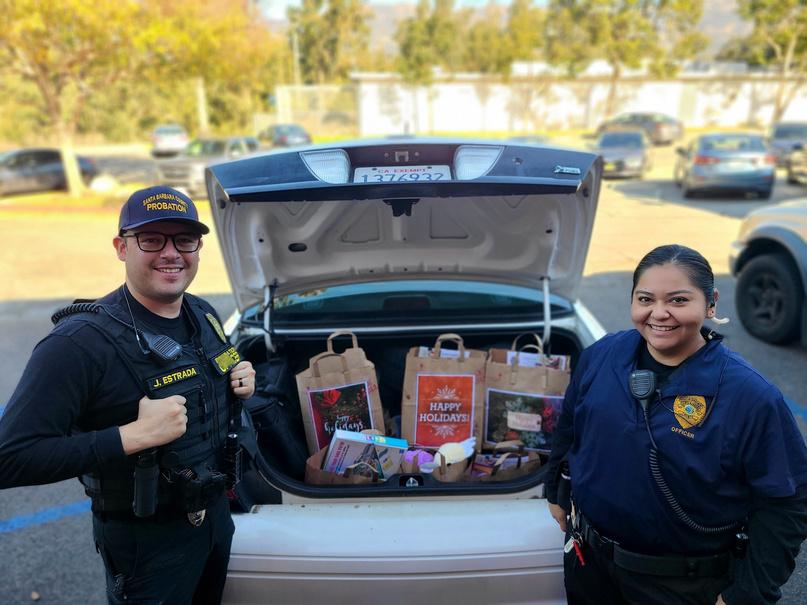


P 23 SANTA BARBARA COUNTY PROBATION DEPARTMENT OVERVIEW 2023
INTAKE
Intake refers to the handling of law enforcement referrals to the Probation Department for unlawful acts committed by youth. It is the initial step in the referral process. Referrals are made through an application and affidavit, which together allege that a youth violated the law. These violations are those that would be a crime if committed by an adult The Probation Department reviews referrals to determine which ones can be handled informally through diversion options and which ones require more formal intervention.
A Senior (Sr.) DPO assigned to Intake will refer certain matters directly to the DA's Office when required by law. These mandatory referrals are often for more serious offenses, but can happen for youth who have been on probation before or if there is a large amount of restitution. Non-mandatory referrals are reviewed for appropriateness for informal handling or diversion programs, with the goal being intervention at the lowest level. In most cases, referrals are received for youth who remain in the community and reside at home. In other cases, referrals are received on youth who were taken into custody at the time of the offense based on its seriousness and any safety risks to the youth or others, and the public
DPOs also evaluate the need for a youth to remain detained in custody and may release a youth pending further investigation or court hearings if it is determined safety concerns can be appropriately mitigated. When the risk to a youth or others is high, a youth may remain detained pending a court hearing where a judge will review the circumstances of a youth’s detention and rule on further detention after hearing from involved parties. Probation seeks to limit the use of detention to the highest risk cases and only for the time necessary to address safety concerns and provide family supports.
For those youth who remain detained, referrals are handled expeditiously and youth are brought before a judge within specific legal timeframes. An evidence-based risk and needs assessment instrument is used with many youth to help identify the highest risk cases for reoffending. It also guides decision-making on appropriate case planning and dispositions. A shorter version assists as a screening tool at the Intake level.
SANTA BARBARA COUNTY PROBATION DEPARTMENT OVERVIEW 2023 P 24
Welfare and Institutions Code (W&IC) sections govern the operation of the juvenile court law and subsequently juvenile probation activites.
INVESTIGATION
When the DA files a §602 Welfare and Institutions (W&IC) petition, the case proceeds through the Juvenile Court in a manner similar to adult court proceedings. In some cases, the Court may find the youth is eligible and appropriate for informal handling despite the filing of a petition. In these cases, the court can order diversion for misdemeanors and deferred entry of judgment for certain felonies. Applicable
sections of the W&IC determine under what circumstances either can be ordered DPOs will prepare reports for the Court’s review in determining if informal handling is appropriate. For specified serious offenses, the Juvenile Court may evaluate a youth’s case for being heard in the criminal courts. On rare occasion, DPOs will prepare Fitness reports for the Court’s consideration in making that determination. When cases are not handled informally, hearings are held to determine whether the allegations contained in the petition are true or not If the charges are found true, DPOs will conduct an investigation on the youth to provide detailed objective information regarding the offense, family history, education, child welfare background, prior offense history, victim impact, restitution, and other factors relevant to the case.
Based on the nature of the offense and the findings of the investigation, the DPO will make a formal recommendation regarding the disposition of the case A youth may be placed on formal probation with certain terms and conditions and allowed to remain in their home. The youth may also be detained or placed in foster care program, initially or later based on subsequent behavior and changing circumstances.
SUPERVISION
Youth who are placed on probation are supervised by DPOs in the community from office locations closest to their residence DPOs collaborate with youth, family members, educators, treatment providers, and other persons or agencies regarding the youth’s case plan. DPOs refer youth to various community-based programs or services based on their needs, including those identified through the risk and needs assessment instrument. DPOs contact youth at their homes, schools, offices, programs, and in the
SANTA BARBARA COUNTY PROBATION DEPARTMENT OVERVIEW 2023
P 25
community. DPOs also contact youth at the Juvenile Justice Center and at Los Prietos Boys Camp A youth’s case plan addresses youth and family needs while taking advantage of existing strengths. DPOs target a youth’s greatest risk and needs factors using the Risk-Needs-Responsivity (RNR) Model. This evidence-based approach to supervision considers a youth’s assessed risk and their greatest criminogenic factors, and matches them with the most appropriate interventions based on their characteristics and individual learning style.
Youth are required to obey the orders of the Court and the direction of their assigned DPO. They may be required to submit to search of their person and property, and drug and alcohol testing. Probation terms are intended to keep youth from engaging in illegal or high-risk behaviors and encourage pro-social behavior. Youth who violate the conditions of their probation or commit new law offenses can be returned to court. Youth may also be required to pay fines and/or restitution to victims or complete community service work hours
COMMUNITY-BASED PROVIDERS
Probation contracts with several local CBOs to provide specific treatment interventions for supervised youth as well as other services tailored toward their individual needs. Programs include those with a specific curriculum such as Seeking Safety and Strengthening Families, as well as others such as mentoring and targeted interventions that are more individualized. Youth attend these and other programs at no cost to them or their families.
WRAPAROUND
Youth at risk of entering and returning from foster care may be referred to the Wraparound Program. The program is open to youth served by the Probation Department and Child Welfare Services. Probation uses the program to intervene with and provide services to youth and families experiencing difficulties and dysfunction in the home. The objective is to offer intense home-based services and support to stabilize a family and prevent a youth from continuing delinquent behavior or entering foster care The program offers a combination of parent peer support, counseling, and programming delivered in a strength-based approach. As part of their aftercare plan, youth placed into foster care may receive wraparound services upon reunification with their families.
SANTA BARBARA COUNTY PROBATION DEPARTMENT OVERVIEW 2023 P 26
PLACEMENT
In some cases, youth on probation may be placed into a foster care program because of serious behavior or mental health issues, and/or serious safety issues in their home. Foster care can include placement with a relative or non-relative, an independent living arrangement, or in a Short-Term Residential Therapeutic Program (STRTP). The focus of foster care, particularly a STRTP, is to limit a youth’s exposure to foster care and provide a high level of therapy and services in a short period to stabilize a youth so they may return home or transition to a lower level of care. Wraparound may be used to support a youth and resource (foster) family for a youth in relative care or to ensure a successful transition from congregate care to the home. Youth placed in foster care must meet specified criteria for care.
Some Probation foster youth transition to independent living arrangements when they turn 18 and still receive services and supervision from a DPO. Youth may also be placed in a local shelter care program if they are experiencing a crisis that does not require formal removal from the home. For a short period they may stabilize in the program and receive needed support to assist them in returning home. This includes referrals to other community programs and engaging parents and caregivers.
SEALING OF RECORDS
A juvenile record may be sealed by the Juvenile Court when a youth’s case is closed successfully or when a youth applies to have it sealed. Specified violent or aggravated offenses may preclude a record from being sealed if the youth is under the age of 18. In cases not sealed automatically, the DPO conducts an investigation into the behavior of the youth since the last Court action and submits a written report and recommendation to the Court regarding the record-sealing request There are no fees for any person for the sealing of juvenile records. All agencies maintaining any record of the youth must destroy or delete information pertaining to that youth when the Court orders the case sealed, including in cases that were informal in nature.

P 27 SANTA BARBARA COUNTY PROBATION DEPARTMENT OVERVIEW 2023
COUNTY OF SANTA BARBARA



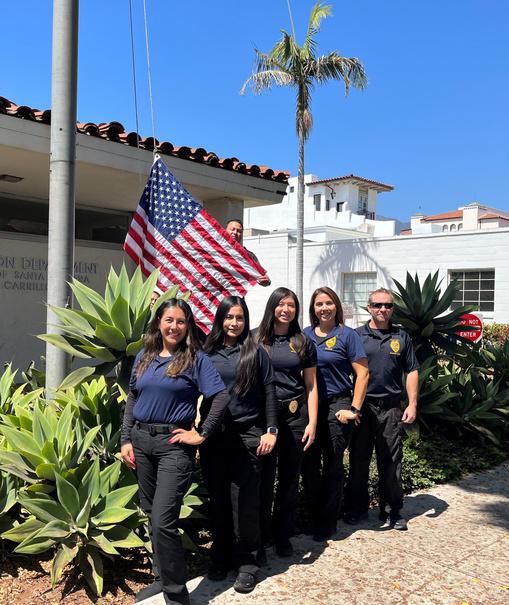


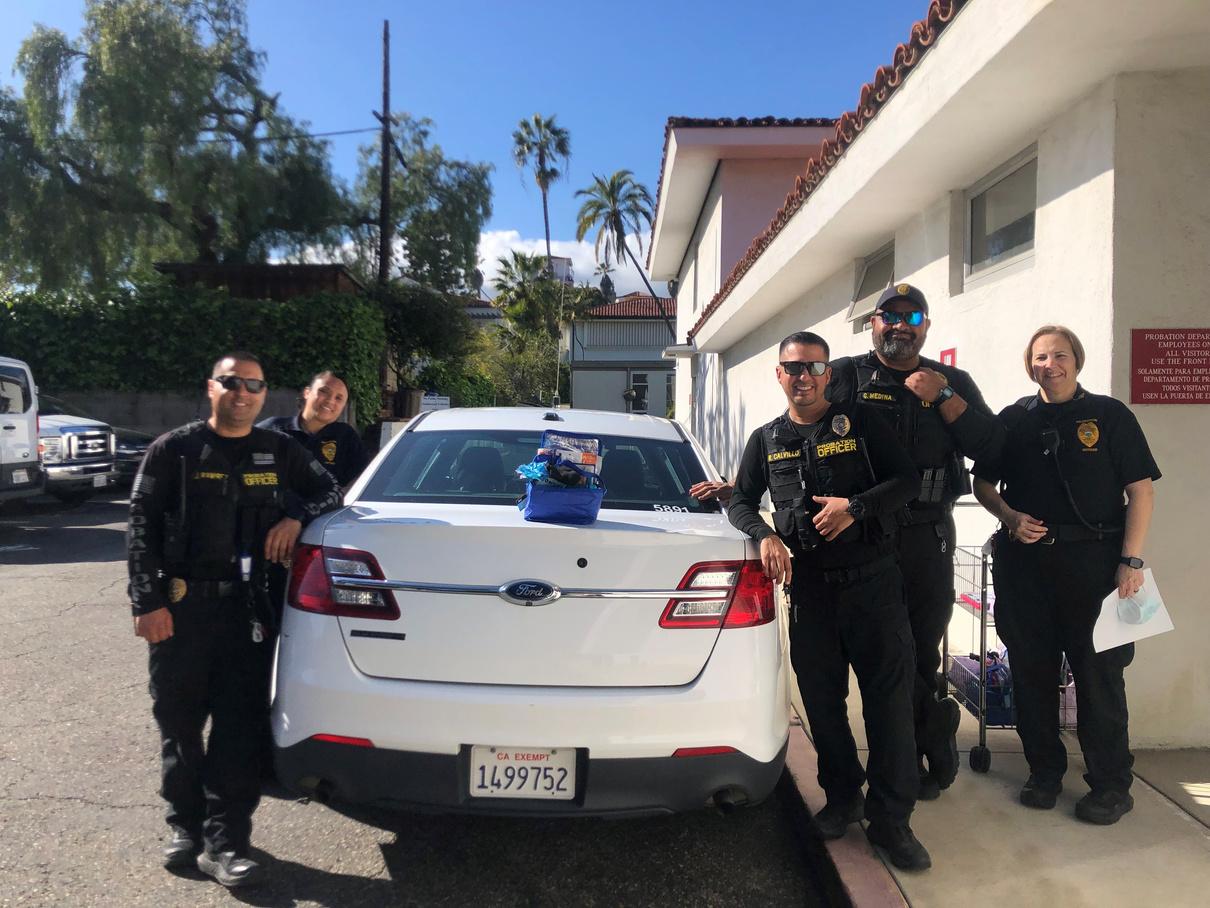
"LEADING THE WAY TO A SAFER COMMUNITY"











 Holly Benton Chief Probation Officer
Spencer Cross Acting Deputy Chief Adult Division
Samuel Leach Deputy Chief Juvenile Facilities Division
Melinda Barrera Deputy Chief Juvenile Division
Holly Benton Chief Probation Officer
Spencer Cross Acting Deputy Chief Adult Division
Samuel Leach Deputy Chief Juvenile Facilities Division
Melinda Barrera Deputy Chief Juvenile Division


























